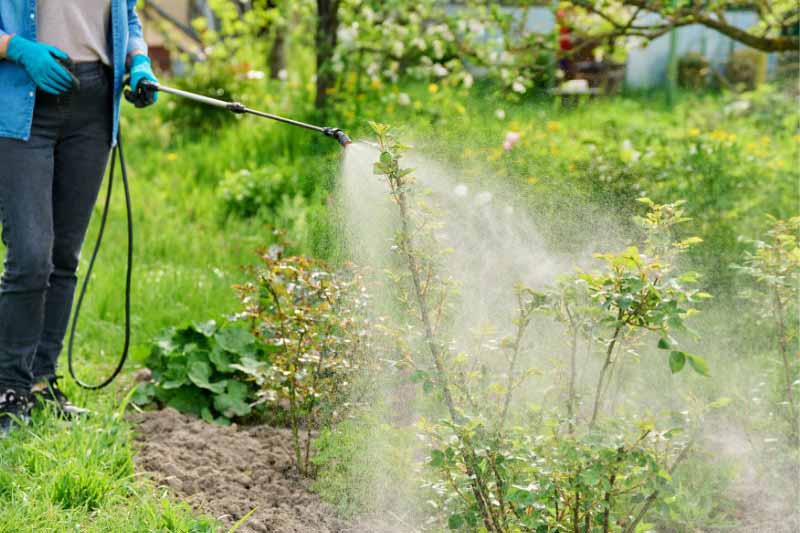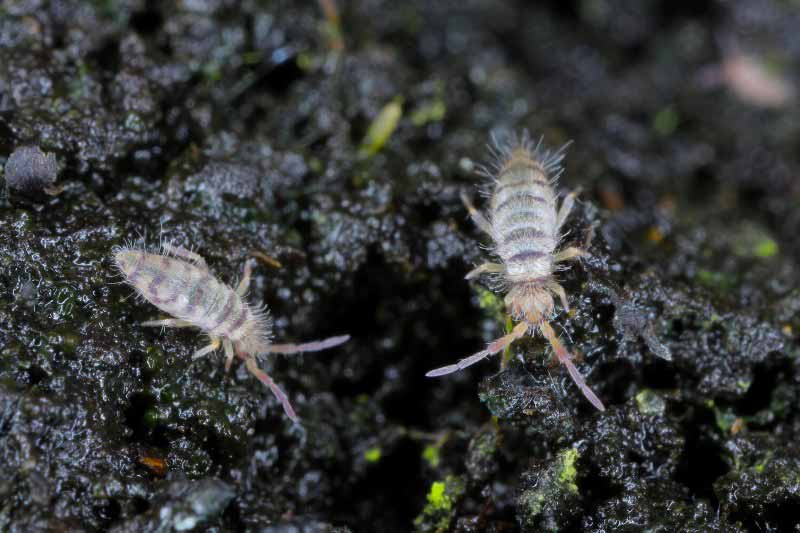Far from being inert, soil is home to a vast number of organisms, most of which are invisible to the naked eye. It is estimated that a single handful of soil contains between 10 and 100 million living beings. However, the pesticides sprayed on plants to combat pests and harmful insects have a significant impact on these organisms. Although it is known that they have consequences for biodiversity and human health, between 55,000 and 70,000 tonnes of synthetic pesticides are still used each year in France.
Pesticides encompass all plant protection products used to protect plants and combat harmful organisms to crops: insecticides (against insects), fungicides (against fungi), acaricides (against mites), herbicides (against "weeds"). They are most often sprayed on plants, and some of them reach the soil directly. Those that settle on the foliage can be leached away with watering or rain, or end up in the soil when the leaves fall and decompose. Pesticides can also coat seeds. Finally, some pesticides are integrated directly into the soil in granule form. However, they contaminate the soil and have a long-term impact.

Soil fauna plays a key role in soil fertility and plant health
The soil contains many organisms: the most visible among them are earthworms and insects. Earthworms play a crucial role in the structure and fertility of the soil. They aerate it by burrowing tunnels, which facilitates plant rooting, allows their roots to breathe better, combats erosion, and improves water infiltration. Additionally, they decompose organic matter, transforming it into essential nutrients for plants. Generally, there are between 50 and 400 earthworms per m². Soil insects also help aerate the soil and increase its porosity. A decrease in their population can lead to soil compaction, making plant cultivation more difficult.
Many living organisms are invisible to the naked eye: these include microorganisms such as bacteria, fungi, and nematodes… They represent 75 to 90% of the standing crop of the soil. They enable the mineralisation of organic matter: this makes mineral elements (nitrogen, phosphorus, sulphur, potassium, magnesium…) assimilable for plants. They produce organic molecules that enhance soil cohesion. Some bacteria allow for the storage of atmospheric nitrogen. These organisms play a key role in ensuring soil fertility. They facilitate the degradation of organic matter… They also aerate the soil, allowing for better water infiltration. All these organisms help keep plants healthy.
By consuming plant debris (dead leaves, roots, etc.), insects and soil microorganisms decompose organic matter, which literally helps create soil, particularly humus. The more alive the soil is, the more fertile and nourishing it will be for plants. Without them, organic matter would accumulate. These organisms that feed on organic matter are called detritivores. This includes particularly worms, mites, and springtails…

The impact of pesticides on soil life
Soil microorganisms, such as bacteria and fungi, are the first to be affected by pesticides. These small creatures play an essential role in the decomposition of organic matter, nitrogen fixation, and soil formation. When pesticides are applied, they can disrupt the delicate balance of these organisms, thereby reducing their number and diversity.
As for earthworms, it is insecticides and fungicides that have the most impact on them. They are responsible for the decline in earthworm populations.
Many pesticides, even those intended to target specific pests, can negatively impact non-target insects. Many insects spend the early part of their lives underground, in the form of eggs or larvae (notably dipterans, such as flies, hoverflies, and gnats…) and are therefore directly affected when soils are contaminated.
Moreover, the presence of different pesticides in the soil creates a cocktail effect: the combined effect of the active substances in these products can either cancel each other out or, conversely, be exacerbated, with a multiplied impact. Thus, the presence of several molecules together creates unpredictable effects.
Pesticides contaminate the food chain, as many animals feed on insects and earthworms, including birds, but also small mammals like hedgehogs, etc.
In France, almost all soils are contaminated by pesticide residues (mainly fungicides and herbicides). A study by INRAE covering 47 French sites studied between 2019 and 2021 showed that 98% of them contain at least one substance. In total, 67 different molecules were found, with glyphosate being among the most frequently detected. These molecules harm soil organisms in more than 70% of the 2,800 experiments conducted. Glyphosate-based herbicides, for example, are harmful to bacteria and mycorrhizae, reduce earthworm reproduction, and force springtails to surface, making them vulnerable to predators.

How to maintain a living soil?
To maintain a living soil, you will have understood, it is important to avoid using pesticides. Instead, turn to more ecological alternatives: beneficial insects, pheromone traps to capture certain harmful insects and prevent them from reproducing, mulching or manual weeding against adventive plants… Encourage significant biodiversity in your garden by installing insect hotels, nesting boxes, hedgehog shelters, etc. We also advise adding organic matter to nourish these insects and microorganisms, and avoiding turning the soil (simply aerate it with a broadfork). Similarly, it is important to mulch to avoid leaving the soil bare: this protects it from direct sunlight and rain (erosion).
































Comments